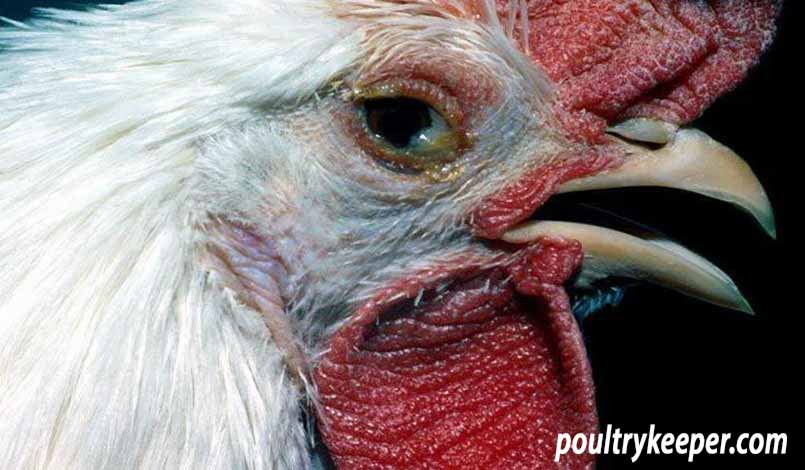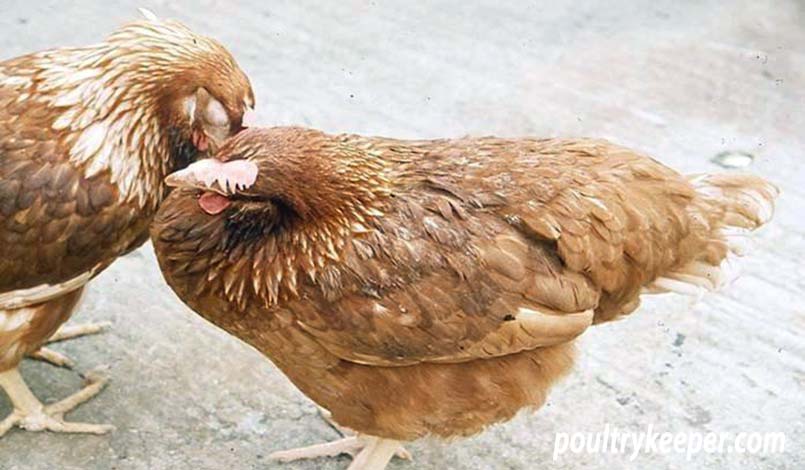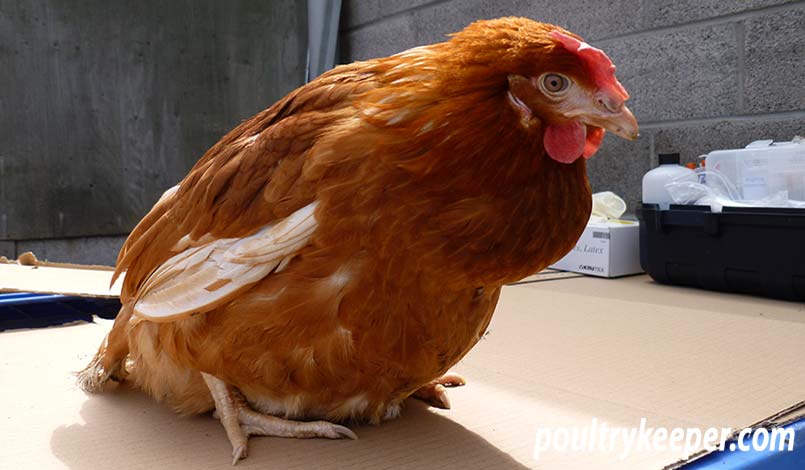
Respiratory
Problems
One of the most common veterinary complaints of backyard chickens is snicking, sneezing and coughing. In this article, Poultry Vet Richard Jackson runs through the different respiratory diseases in chickens we might encounter in our flock.
Respiratory disease in chickens often presents itself with one or more birds sneezing/snicking. These birds can have a runny nose and foamy running eyes. In severe cases of respiratory disease, these birds can have swollen sinuses (which presents as swelling around the eyes), can stop eating and in extreme cases may die.
There are several predisposing factors for respiratory disease in chickens: as with any animal, stress can cause an underlying disease to show itself. This stress could be extremes of temperature and humidity, high stocking density, being transported, being taken to a poultry show, and new animals introduced to an existing/established flock.
What to do if your chickens get a respiratory disease?
If your bird does develop any of these signs, it is worth consulting your vet as antibiotic treatment is usually advised. In general, your vet will often advise that the entire group of birds should be treated. Usually, medication is given in their water, but injections may be the best option for severely ill birds.
Birds suffering from a respiratory disease should always be isolated from the other healthy hens, given lots of TLC and be given veterinary attention where necessary.
Enrofloxacin (Baytril) is an antibiotic that many bird owners are familiar with. A vet may have given your chicken some. It is widely talked about on different chicken forums and information sites. This antibiotic may not always be the drug of choice in all respiratory conditions, and we would certainly advise you to seek proper veterinary advice before your chickens are given any prescription medication.
How to test for a respiratory disease in chickens?
There are several possible pathogens involved in respiratory disease in chickens. A simple blood test can determine which one(s) are the cause. It is often the case that more than one pathogen is involved; the most common ones are Mycoplasma Gallisepticum, Infectious Bronchitis, ART (AvianRhinoTracheitis virus) and ILT (Infectious LaryngoTracheitis virus).
Mycoplasma Gallisepticum (MG)
Mycoplasma Gallisepticum: This type of bacteria can cause respiratory disease in chickens and other poultry. It is often associated with swollen sinuses, sneezing and foamy watery eyes. In certain cases, it can cause swollen joints and subsequently lameness. It can infect the oviduct, thus altering eggshell colour and quality, and thus we can transfer it via the egg to chicks.
Once infected, a chicken is infected for life; although clinical signs will regress with time and treatment, they are always liable to come back.
AvianRhinoTracheitis (ART)
ART is a pneumovirus that causes swollen heads, swollen sinuses, sneezing and in severe cases nervous signs.

Infectious Bronchitis (IB)
Infectious Bronchitis (IB) is a coronavirus that causes sneezing, foamy eyes and swollen sinuses, usually in young birds. However, like Mycoplasma, it can infect the oviduct again, altering eggshell colour and quality, but unlike Mycoplasma, it doesn’t infect chicks via the egg.
Severe IB infection in young female birds can permanently damage the oviduct causing it to permanently not carry the egg from the ovary to the vent, so the eggs are laid internally.
These eggs inside the bird are slowly absorbed, but they provide excellent food for bacteria, so internal layers are vulnerable to egg peritonitis.

The eggs are often absorbed much more slowly than they are internally laid, so they build up in the bird’s abdomen, causing them to adopt a penguin-like stance.
Infectious LaryngoTracheitis (ILT)
ILT is a herpes virus and causes similar respiratory signs. ILT often leads to a plug of blood and mucus, which can block the bird’s trachea (windpipe), leading to the bird choking to death. This virus-like Myoplasma never goes away and can come back during times of stress. Like other herpes viruses, it is for life.
Preventing infection
As many of you will notice, the pathogens above are mostly viruses that will not respond to antibiotics. However, these viruses often damage the respiratory system sufficiently to allow secondary bacteria such as E. coli and Pasteurella to cause infection and, in severe cases, blood poisoning.
Furthermore, chickens have a unique respiratory system compared to us mammals. They have very thin air sacs and viruses such as IB damage the protective cells of the trachea (windpipe). The birds can easily breathe in bacteria which can then cross the air sacs into the abdomen to cause peritonitis.
The best way to prevent infection of your birds is to minimise stress, ensure the stocking density and ventilation are correct and buy-in disease-free birds from a reputable supplier that you quarantine for at least 3 weeks (try not to buy from local markets).
If your birds are being stressed by bad weather or moulting etc., you may want to consider giving them a course of multivitamins such as Amino Plus or a product such as Beryl’s Friendly Bacteria – a sort of “Yakult” for birds. Both these products will give your birds a boost which will be invaluable to helping them towards a full recovery.
If you breed your own birds and have any ongoing disease issues, you can consider vaccination of your flock. The staff at Chicken Vet offer advice on a mini flock vaccination programme; for more information on any of these matters we have discussed, don’t hesitate to contact us.




